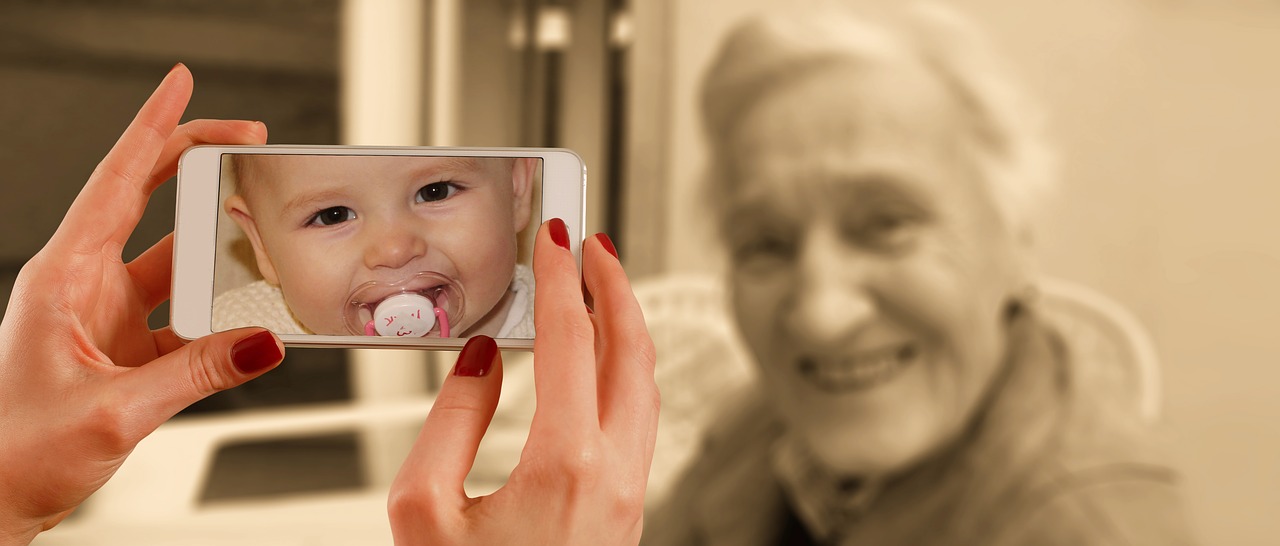Non-Fiction Texts
Chapter 4: The Stories of a Moment
MINDS ON
 Vocabulary 104
Vocabulary 104

 What Did You Do Yesterday
What Did You Do Yesterday
You will answer the same question a few times. The only difference is how long you have to answer. Use your Notebook to record (in writing, visually, or orally) your responses for review later on.
Take five seconds to answer this question: what did you do yesterday?
5SecondTimer
Take one minute to answer this question: what did you do yesterday?
1MinuteTimer
Take five minutes to answer this question: what did you do yesterday?
5MinuteTimer
Now take a look at your answers. Odds are, your answers are different. And that shouldn't be a surprise. After all, you had longer to reflect and write. However, did the focus change or did it just become more detailed? Did you remember things differently when you had longer to think about them? Are your answers about a single event or a series of different events?
Now take a moment to think about what you left out. Why do you think that was the case?
No matter what your answers are, you've just started the process of selectively telling a story. Why selectively? Because whether you did it intentionally or not, you chose which events were most memorable or meaningful to you...and odds are, you left out any time you spent daydreaming, or brushing your teeth, or sitting in traffic. This isn't surprising...after all, would you really want to read, listen to, or watch a story about the literal, moment-by-moment events in someone's life? It's likely your answer was 'No' since this would have been pretty boring. In fact, even so-called reality television is heavily planned and edited to allow for a storyline to surface.
However, this doesn't mean that selectively telling a story is wrong. On the contrary, good text creators and editors know how important it is to filter and focus the details in a story so that it strikes a balance between being engaging and effective. Throughout this activity, you will learn how to construct your own personal narrative.
 Resources
Resources
- Manipulative Editing is a fascinating article that identifies techniques that reality television producers use to enhance the drama.
- Producers behind hit reality-TV shows reveal the secret tricks they use to orchestrate crazy drama is an interesting article that explains various ways producers prepare and edit to maximize conflict to ensure viewer interest.
- Charlie Brooker's Screenwipe - Reality TV Editing is a video that provides a brief historical account of how editing techniques have changed with technological advancements.
ACTION

Non-fiction stories come in all shapes and sizes. One that you use quite often, whether you know it or not, is an anecdote. (definition: An anecdote is a short and amusing or interesting story about a real incident or person.) Most times when you tell your friends about something that's happened to you, it's an anecdote. Take a look at the picture of the baby and the senior citizen. Imagine how many different stories could be told from the time occurring between her birth and current age. Who could tell them? What could these stories say? How could they differ?
 Four Purposes of Anecdotes
Four Purposes of Anecdotes
Read this article, Examples of Anecdotes from Yourdictionary.com (Original article). In your Notebook, copy out an anecdote's four purposes for use later on.
If you want to view any links in this pdf, right click and select "Open Link in New Tab" to avoid leaving this page. (View the original article.)

 Evaluating the Evidence
Evaluating the Evidence
When constructing anecdotes, people use a variety of different evidence types to communicate their ideas clearly and effectively. To help you learn about different ways to use evidence to support a story, complete this Evaluating the Evidence activity. Be sure to save the information in your Notebook for use throughout the course.
Use the interactive below to learn about terminology. Drag the words in the blue boxes over to the correct example.
EvaluatingTheEvidence
Throughout your life, you will gather anecdotes from your experiences and reflections. However, you don't need to have lived many years to have interesting stories to tell. Watch Tavi Gevinson's Tedtalk "Still figuring it out" to hear Geninson reveal that, despite her successes, she still has a lot to learn.
Before embarking on any long task or journey, a protagonist in a bildungsroman story will typically take time to prepare. These preparations can range from being physical (in terms of training), to mental (in terms of meditation), to emotional (in terms of parting conversations). Since you will read a variety of texts throughout ENG2D, you'll prepare by completing the following Reading Strategies interactive.
ReadingStrategies
 Analysing Anecdotes
Analysing Anecdotes
Write down your ideas on the following:
- Was Gevinson's anecdote effective? How do you know?
- Of the four types of anecdotes, which one do you think Gevinson's was and why?
- Identify, with examples, five different types of evidence Gevinson uses. Is it effective? Why?
- If you wanted to make Gevinson's anecdote one of the other types of anecdotes, what would you need to change?
- What would you have changed about Gevinson's anecdote that would have made it even more effective? Justify your decision.
- What open-ended question would you ask Gevinson, if you could?

Of course, while anecdotes are always personal, they aren't necessarily always accurate. No doubt you've had situations where you and a friend were explaining the same situation to someone and your stories sounded different. Different perspectives - or weltanschauungs - alter the way we understand and create anecdotes.
 Weltanschauungs
Weltanschauungs
To understand this better, identify a situation that happened to you and describe it in your Notebook. Then ask any three people involved to tell you what they believe occurred. Record what they said. How did their accounts differ? Why do you think that was?
If you want to view any links in this pdf, right click and select "Open Link in New Tab" to avoid leaving this page. (View the original article.)
It's time to learn more about how different perspectives change the stories we tell.
 Perspectives
Perspectives
Use the Narrative Planner to choose an event, perspective, and audience. The event is what has occurred, the perspective is who is telling the story, the audience is who is listening to the story, and the purpose is the anecdote's reason for being shared. After using the Narrative Planner, copy out the three categories into your Notebook and then generate a 200 to 300 word narrative from it.
NarrativePlanner
 Anecdotally Speaking...
Anecdotally Speaking...
Now that you've created your anecdote, complete the following:
- Include your anecdote, along with the four categories you chose.
- Go back to the interactive and choose a different perspective; list what it was and briefly, but specifically, explain how you would have to change your anecdote.
- Go back to the interactive and choose a different audience; list what it was and briefly but, specifically, explain how you would have to change your anecdote.
- Go back to the interactive and choose a different purpose; list what it was and briefly, but specifically, explain how you would have to change your anecdote.
- After considering the different changes you would have to make to your original anecdote, write a short reflection on the following prompt: 'Perspectives can change the stories we tell.'
“
If the legends fall silent, who will teach the children of our ways?
~ Chief Dan George, My Heart Soars
Anecdotes do more than just tell stories, though; they can also preserve and capture culture. To learn more about the power that anecdotes have, you can choose (of course, you can choose both) how you would like to receive the following Aboriginal anecdotes about surviving Canada's residential schools.
If you would like to learn by reading, then read this article, 14 first-hand stories underlining how residential schools tried to “get rid” of Indigenous cultures from Pressprogress.ca. (Original article)
If you want to view any links in this pdf, right click and select "Open Link in New Tab" to avoid leaving this page. (View the original article.)
If you would like to learn by viewing, then watch this video, Stolen Children: Residential School survivors speak out.
 Appreciating Anecdotes
Appreciating Anecdotes
After reading and/or viewing the residential school survivors' anecdotes, select the one that you felt was the most moving. Share a short summary of that anecdote with the class and briefly explain why you believe that anecdote was the most effective. Your explanation should consider and include some or all of the ideas contained above, such as:
- the purpose of the anecdote;
- evidence used in the anecdote;
- the author of the anecdote; and/or
- the overall impression of the anecdote.

Now that you've had a chance to read and create anecdotes, it's time to expand your skill set to include memoirs. A memoir is an extended story of someone's life, but not their entire life's story (that's a biography, which you'll learn about later). As Joe Kita from The Globe and Mail puts it, "you can only ever write one autobiography, but you can write countless memoirs." To learn more about what makes a memoir, read this article, "How to Write Your Memoir" from The Globe and Mail. (Original article)
If you want to view any links in this pdf, right click and select "Open Link in New Tab" to avoid leaving this page. (View the original article.)
After learning what makes up a memoir, it's time to read one. Ishmael Beah is a novelist famous for his harrowing memoir A Long Way Gone: Memoirs of a Boy Soldier. The following article selects some of Beah's anecdotes to make a memoir. Read this article, "The Making, and Unmaking, of a Child Soldier" from The New York Times. (Original article)
If you want to view any links in this pdf, right click and select "Open Link in New Tab" to avoid leaving this page. (View the original article.)
 Memoir in Review
Memoir in Review
Now that you've read Beah's, "The Making, and Unmaking, of a Child Soldier," it's time to extend your analytical reading and writing skills by answering the following questions. This isn't a test, so you can return to the article as often as you'd like.
- What pre, during, and after reading strategies did you use to help you understand the article?
- What is Beah's purpose in writing this article?
- What details in the article are most necessary to support Beah's purpose?
- What can be inferred from the title of the article?
- Based on your own experiences, do you find this piece convincing? Justify your answer.
- How does Beah gain and maintain the reader's interest throughout the article?
- Beah clearly has a biased perspective. Does this make his memoir more or less effective? Explain your response.
- What stylistic devices and/or text features does Beah use in the article to be effective in achieving his purpose? Were they effective? Why or why not?
- Why do you think Beah uses subheadings throughout the article?
- Beah uses many words native to his upbringing. List three words you previously did not understand, along with their definitions. What strategy did you use to figure out what they meant?
 Resources
Resources
Want to read more memoirs but not sure where to begin? Are you interested in writing memoirs of your own? Here are some resources to get you started.
- 100 Must-Read Memoirs is an article that provides a comprehensive list of famous and infamous memoirs, along with links to find out more about them.
- 15 Essay-Length Short Memoirs to Read Online or During Your Lunch Break provides a series of exemplary memoirs ranging from the humorous to the heartwarming.
- 25 Memoirs to Read Before You Die is an article that gives a short summary of each of the specifically selected memoirs.
- Top 10 Memorable Memoirs That Could Change Your Life is a video that provides succinct summaries of all ten memoirs.
- Memoirs Written By Women is an amateur YouTube video review of a wide variety of memoirs written by women.
- The Art of Memoir Writing is a video interview that explains in specific detail how to construct a memoir from start to finish.
CONSOLIDATION
 Memorable Memoir
Memorable Memoir
Now that you've had a chance to write your own anecdotes and read a memoir, it's time to put your skills into practice. For this assignment, you will write a memoir. It can either be about you or someone you know personally. If you are writing about someone else, please make sure that you get her or his approval first. Be sure to change any information necessary to protect this individual's privacy. For this assignment, you should ensure your memoir includes the following:
- a purpose;
- a central theme, idea, or focus;
- varied evidence types; and
- several related anecdotes.
Your memoir should be proofread, edited, and revised!
| Checklist Items | |
|---|---|
| I have proofread my work for spelling errors. | |
| I have proofread my work for punctuation errors. | |
| I have proofread my work for grammatical errors. | |
| I have proofread my work for sentence structure errors. |
 Metacognitive Moment
Metacognitive Moment
Now that you've written your memoir, it's time to reflect on your learning by answering the following questions. You can complete this assignment by either writing out the answers or recording (orally or visually) them.
- Why did you choose who the memoir would be about?
- Why did you choose the particular focus you did?
- How did you decide to organize your memoir? Why do you believe this made it effective in achieving its purpose and/or engaging the audience?
- What is the strongest aspect of your memoir? What aspect needs improvement?
- Identify one word that you intentionally changed. How did changing that word make your memoir better?
- What other changes did you make when proofreading, editing, and revising your work? Be specific. How did these changes make your memoir more effective?
- If you recorded your memoir, how did this change it? If you did not record your memoir, how do you think doing so would change it and why?